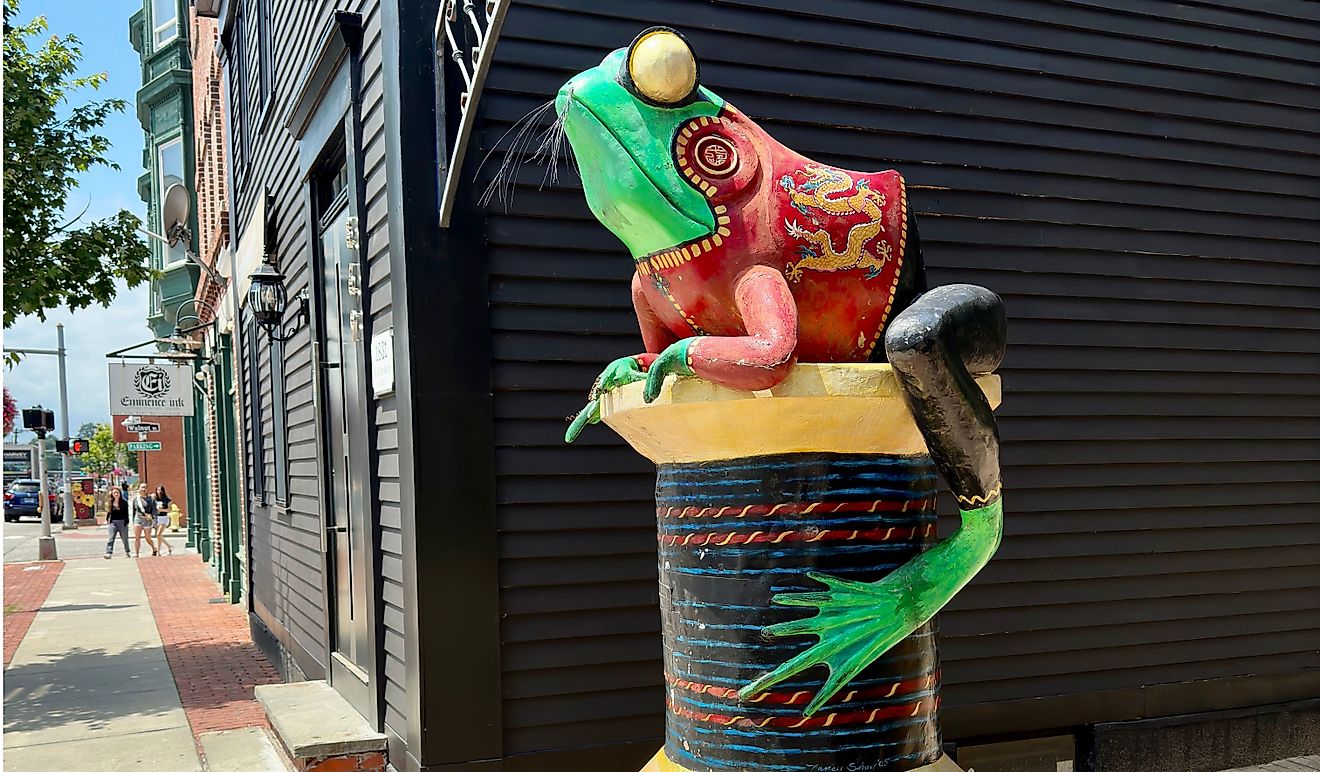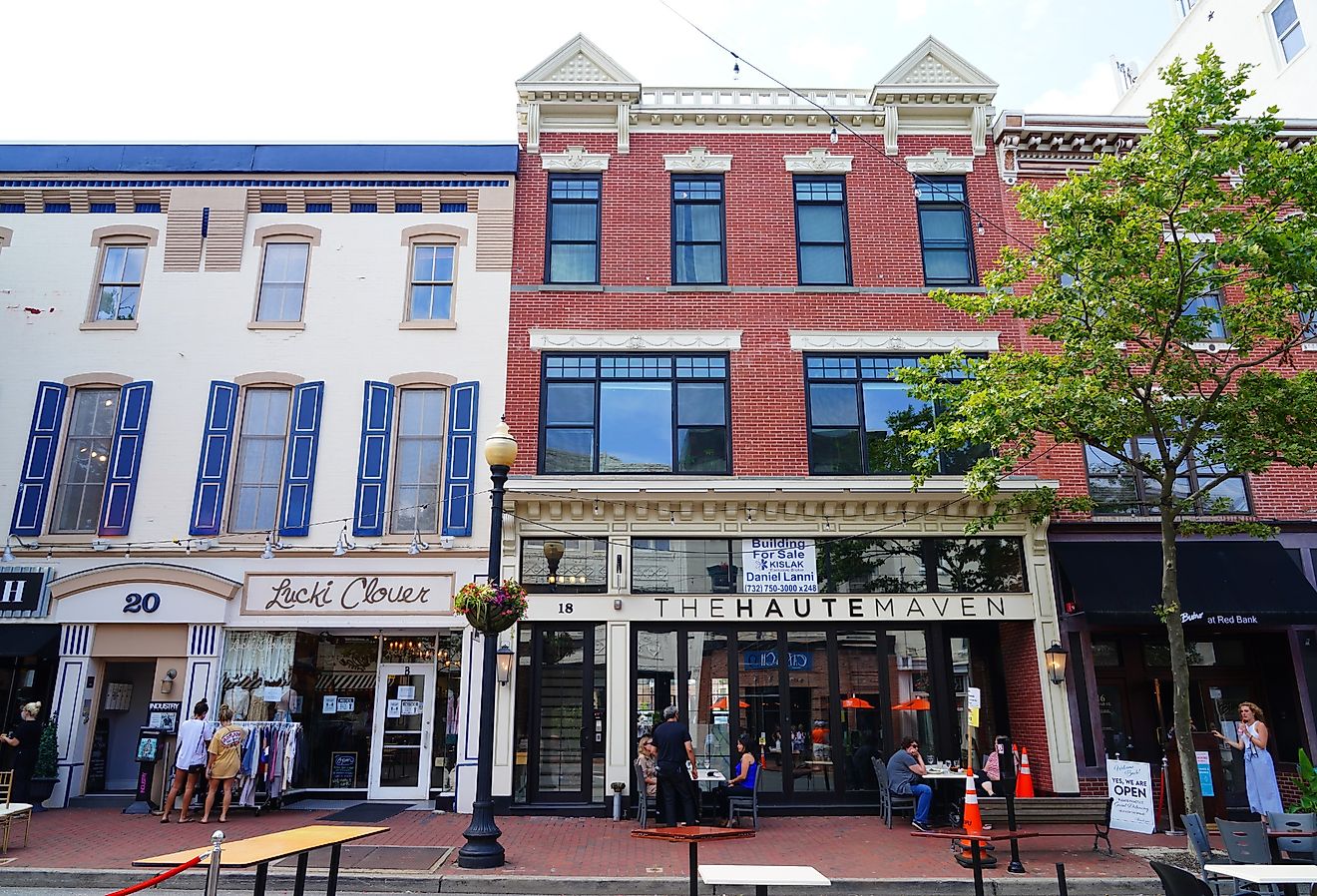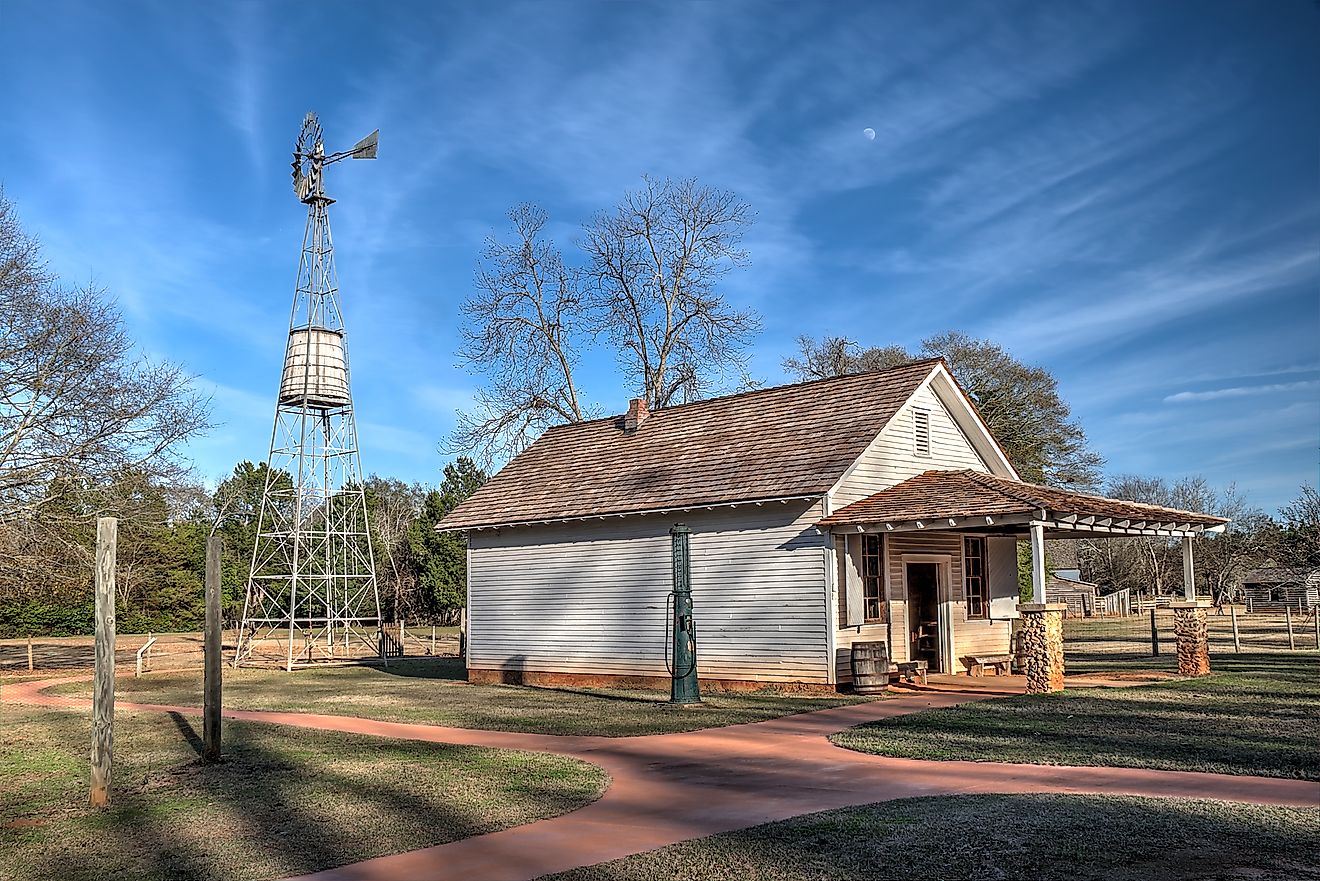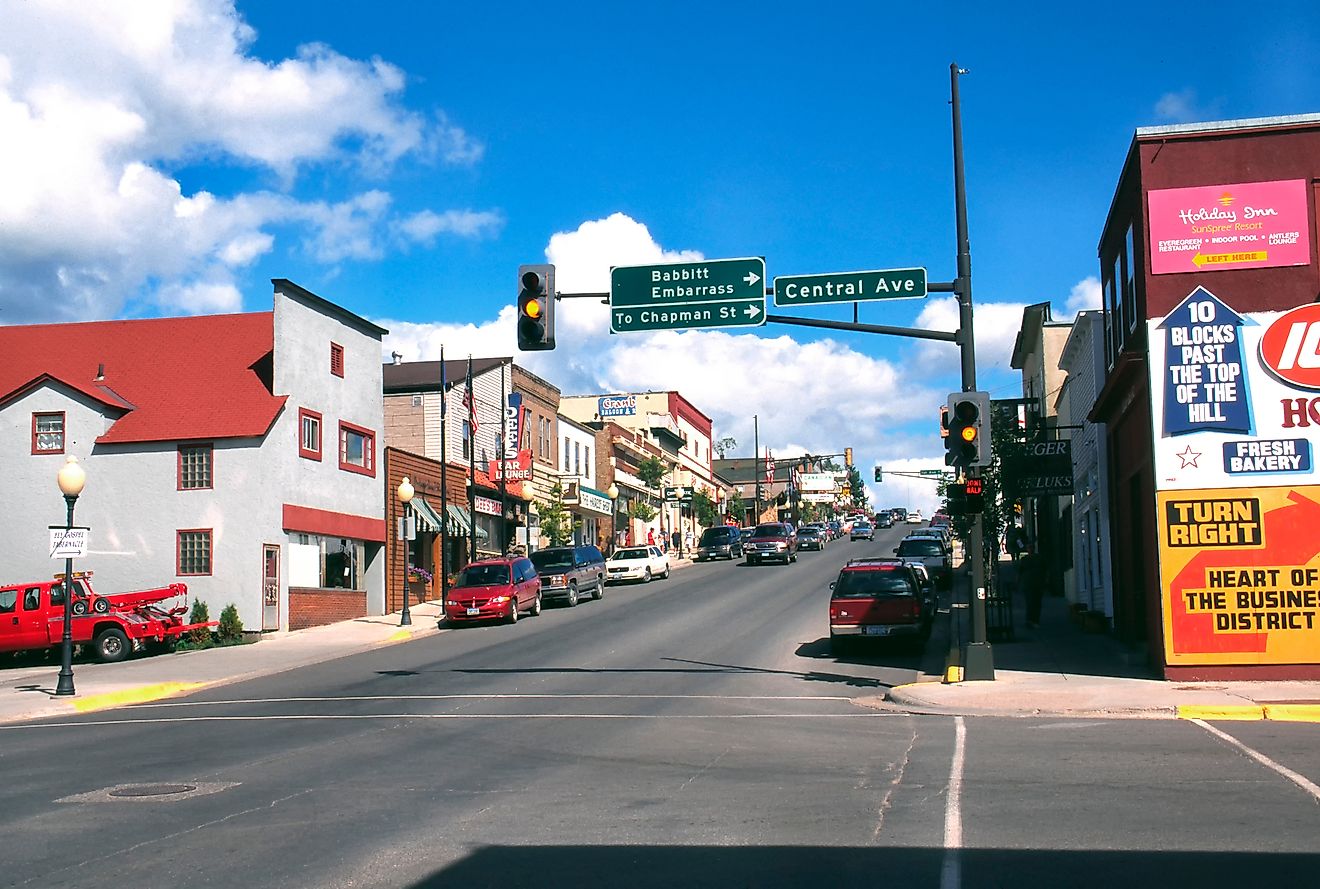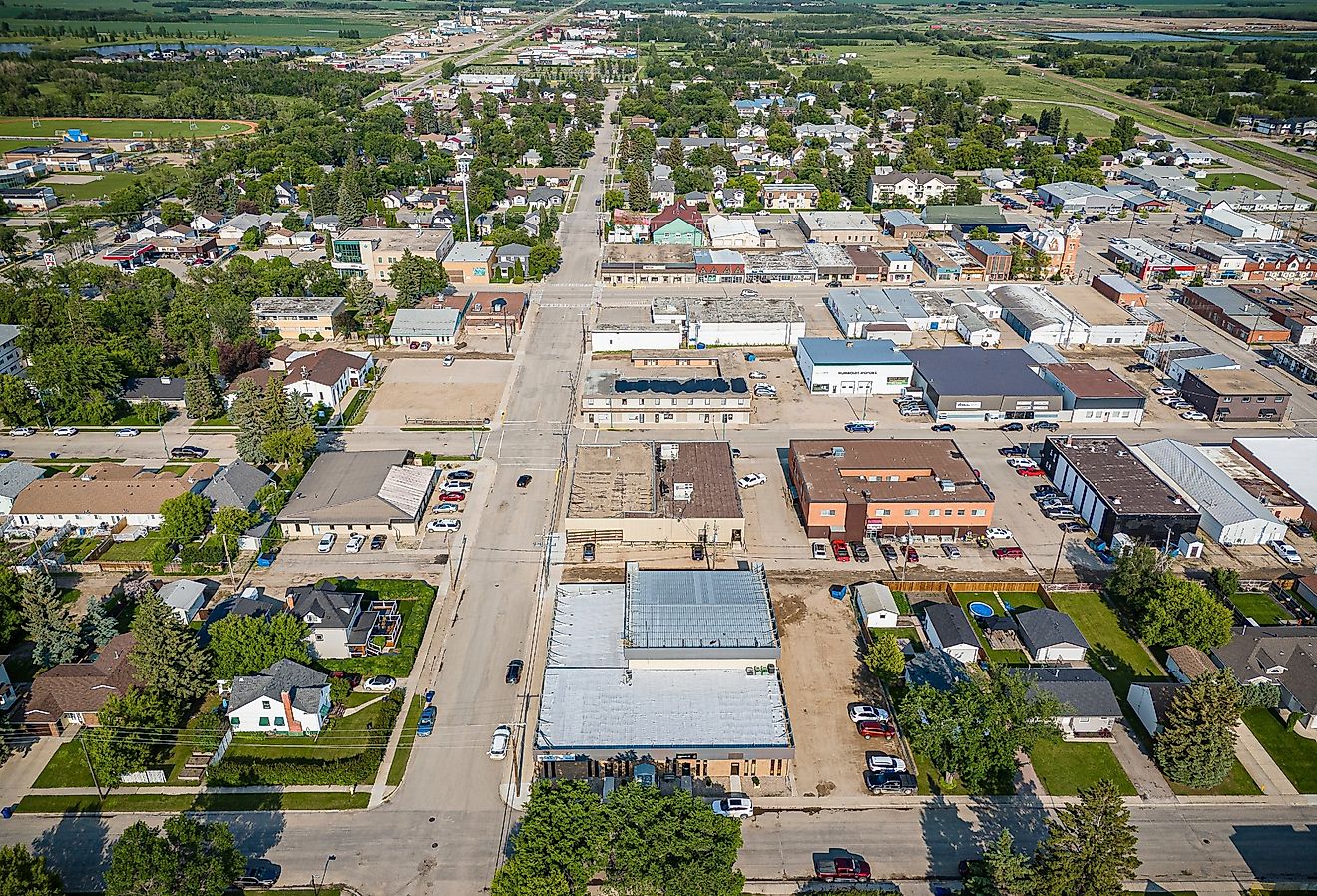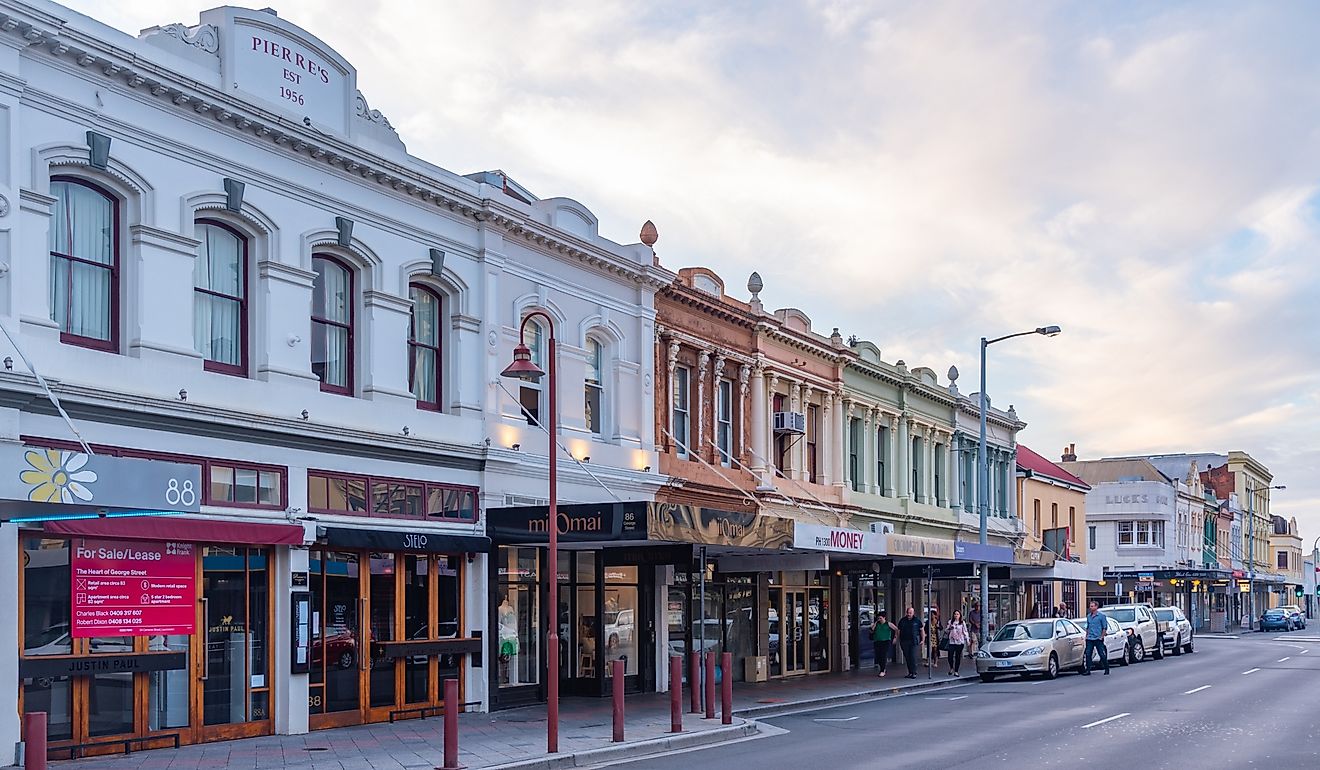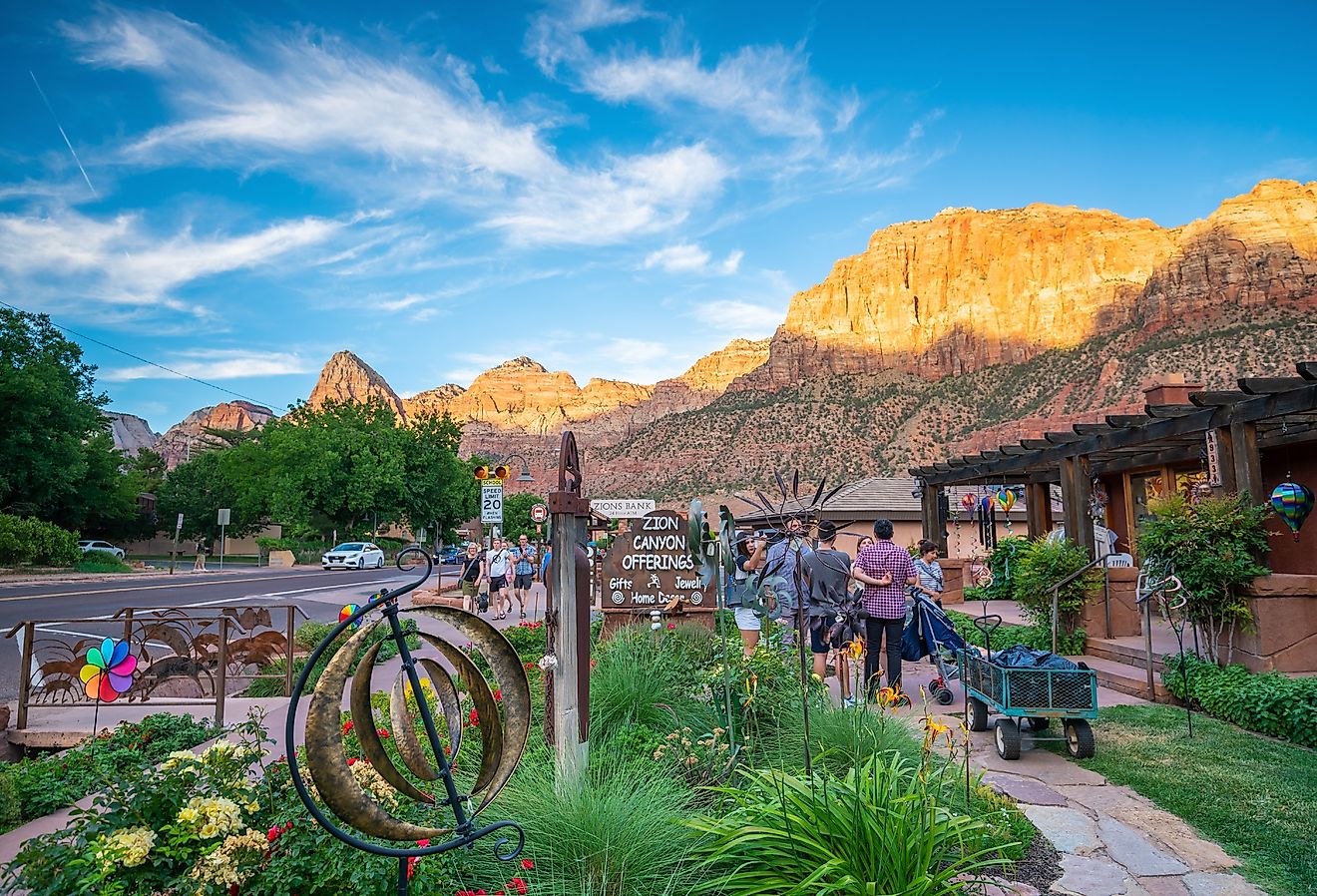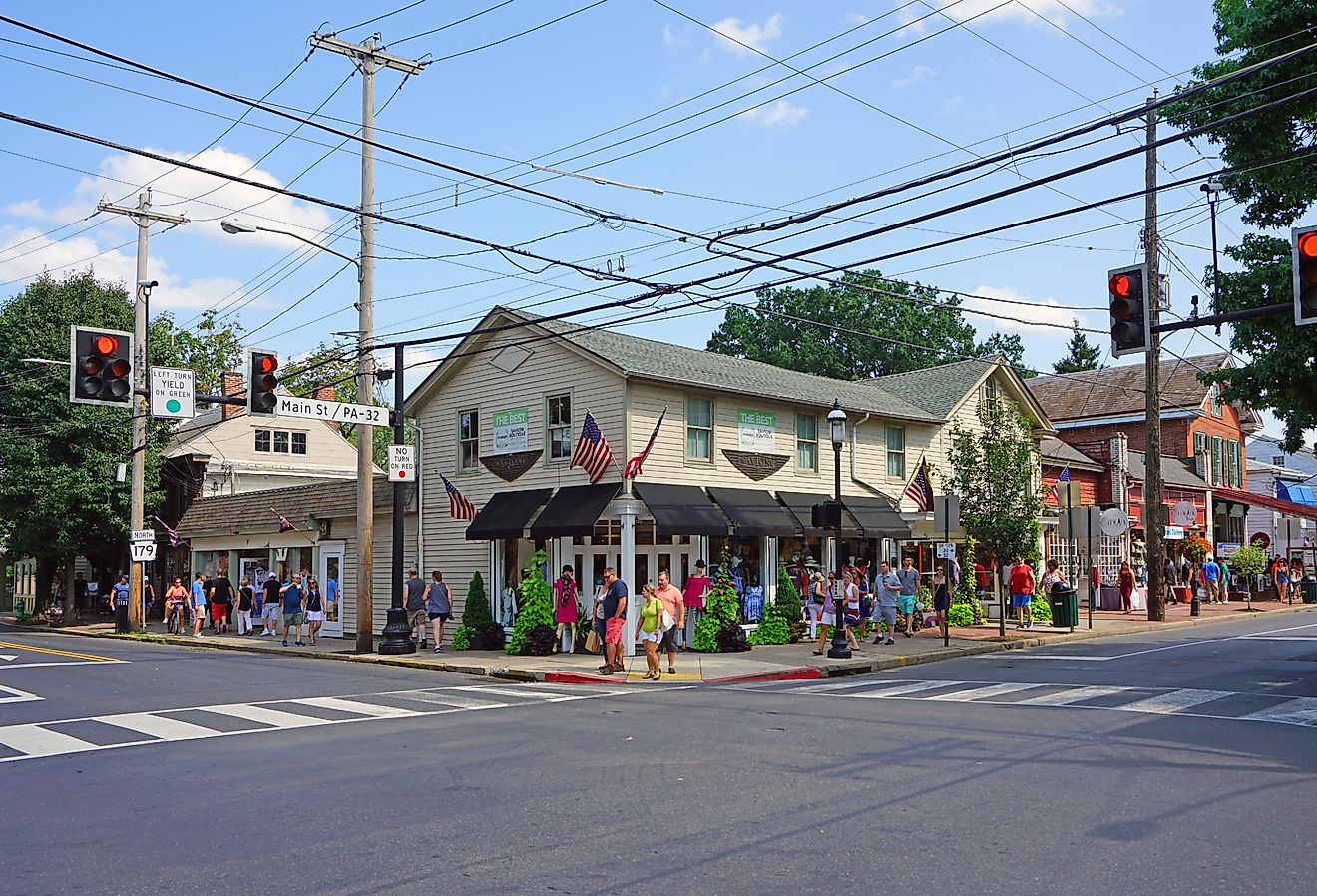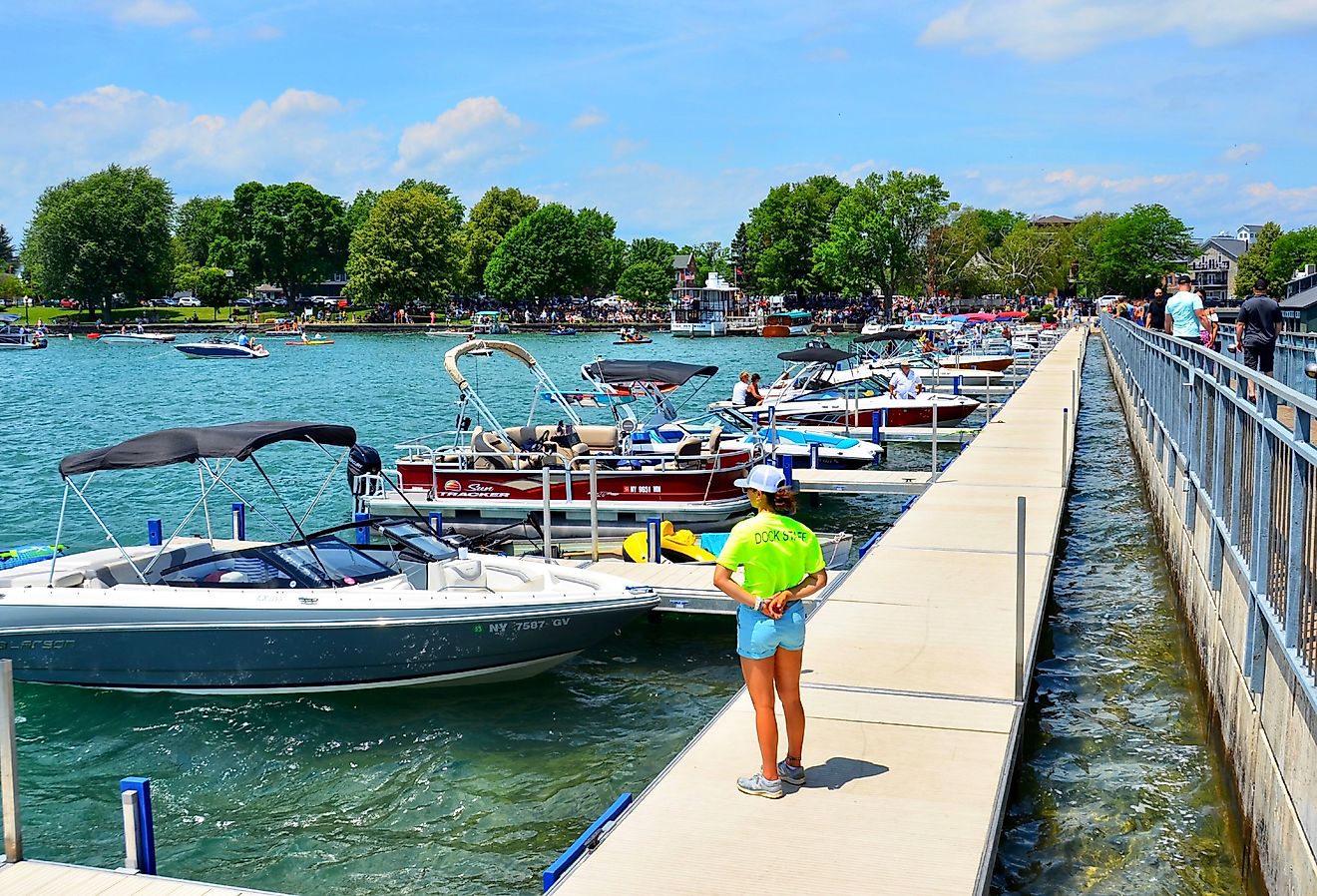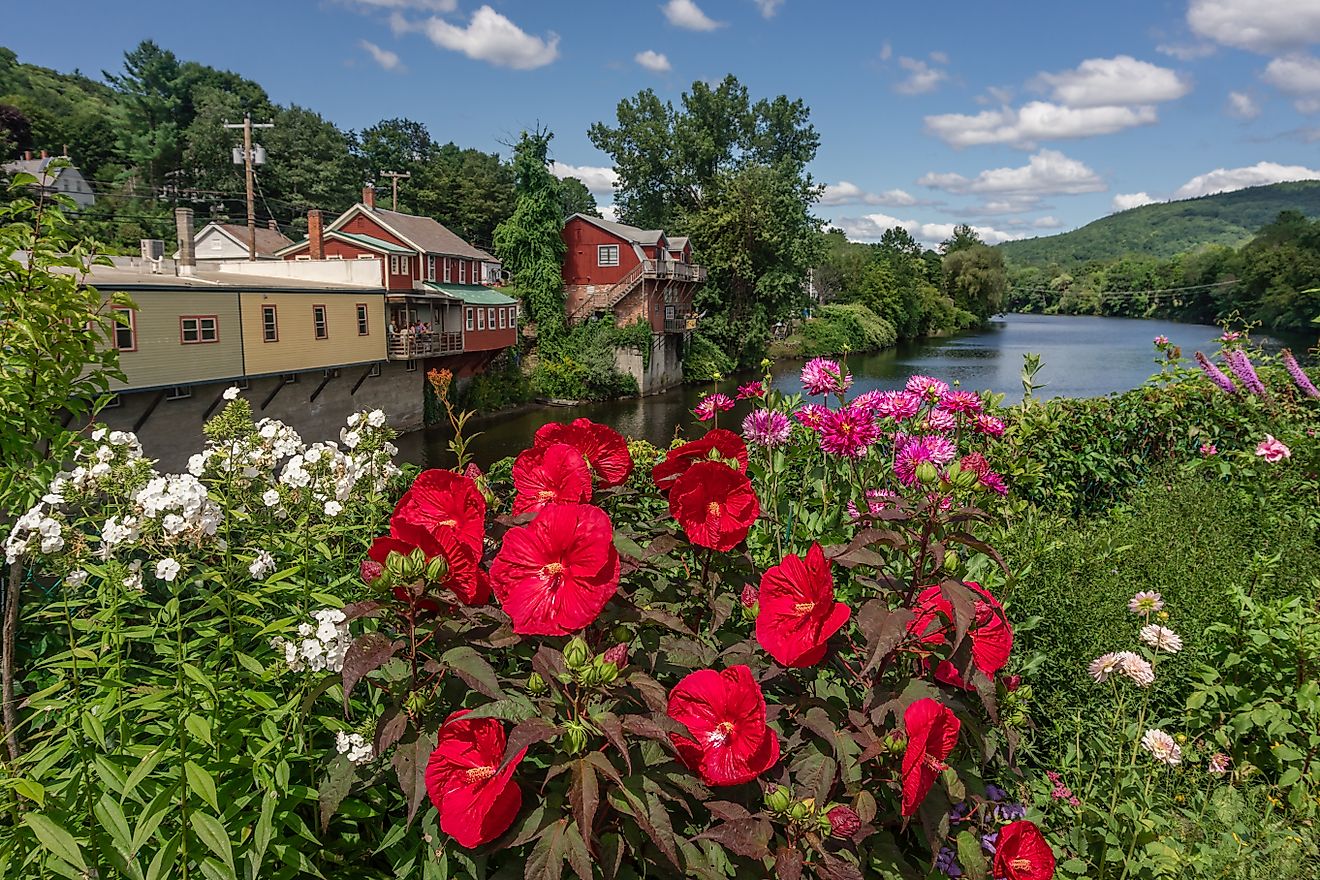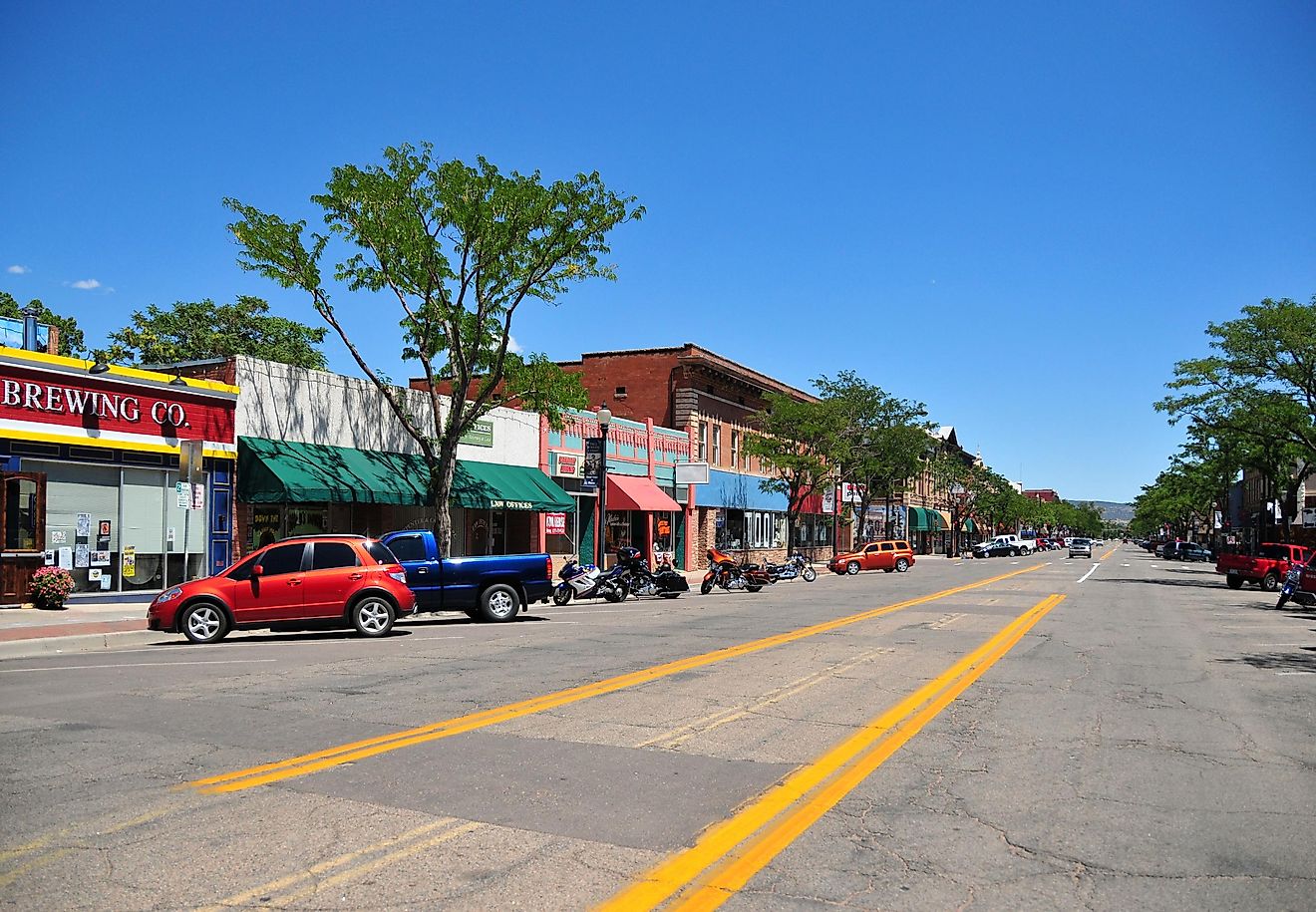
These 7 Towns in North Carolina Have Beautiful Architecture
As one of the original Thirteen Colonies, North Carolina is a goldmine of gorgeous historic architecture. Homes, cottages, colleges, theaters, stores, lighthouses, and graveyards spanning many centuries and styles decorate the state from the mountains to the sea. Many of these haunts can be found in unassuming small towns, which were settled and thus designed before grandiose cities. Ditch the skyscrapers and embrace the ground grazers of seven North Carolina towns with beautiful architecture.
Davidson
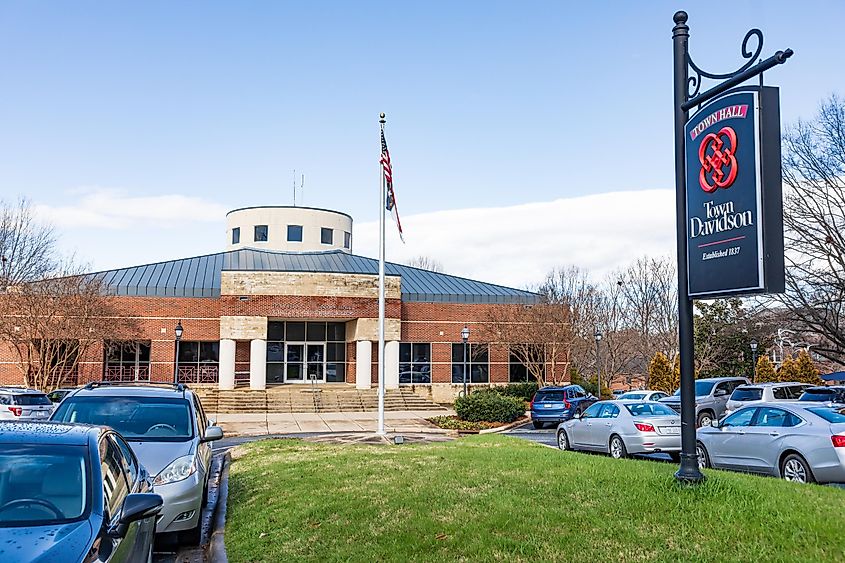
Davidson is a sizeable town of about 15,000 people in the Charlotte metropolitan area. It is home to Davidson College, whose construction actually predates the town. In fact, Davidson College was the town for decades until the surrounding area was settled. Today, you can tour the campus and admire Greek and Classical revival buildings that look much the same as they did nearly two centuries ago. These include Elm and Oak Row, built in 1836 as dormitories; Eumenean Hall, erected in 1849; and Philanthropic Hall, which dates to 1850. Davidson College has even absorbed formerly independent businesses like the Carolina Inn, built circa 1848 and annexed in 1946. Davidson takes "college town" to another level, which you can climb for amazing views.
Brevard
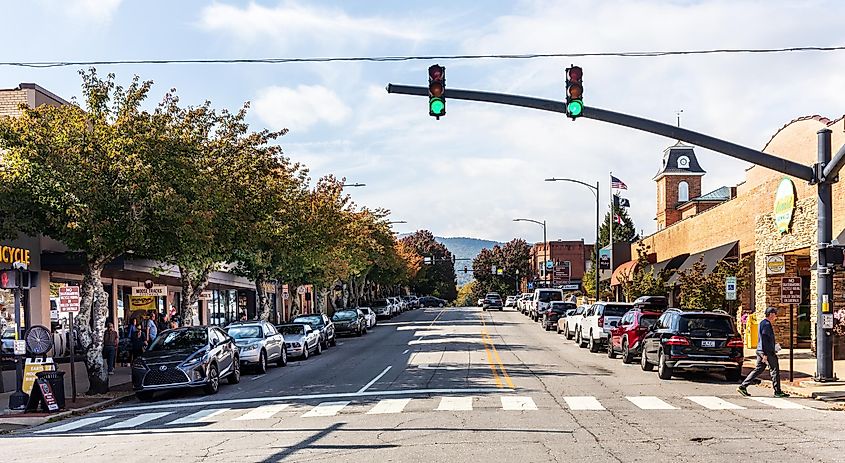
Situated in western NC near the Pisgah National Forest, Brevard is known for nature. But nestled among mountains and pines and magnificent waterfalls are stately historic buildings mixed with modern/postmodern marvels. In the former camp are the 1872 Transylvania County Courthouse, the 1899 McMinn Building, and the 1901 Aethelwold Hotel, which the Transylvania County website calls "the largest hotel from the early twentieth century still standing." In the latter camp are Local Color (a funky art shop), the Parker Concert Hall (a 400-seat venue with a retractable modular system), and Oskar Blues Brewery Taproom. Even Brevard's squirrels have a postmodern white design and they are celebrated with White Squirrel Weekend each May.
Hillsborough

Founded in the mid-1700s, Hillsborough showcases nearly three centuries of American architecture. On East King Street sits Seven Hearths, a Federal-style house with a likely Georgian-style core. The core dates back to 1754, when it was a tavern called William Reed's Ordinary, and new wings were added circa 1830 and 1877. Just a block distant stands the Nash-Hooper House, built in 1772 by future Revolutionary War general Francis Nash. He died after the Battle of Germantown in 1777, so the house changed hands and was eventually held by Declaration of Independence signer William Hooper. Because additions were made all the way to 1999 and perhaps later, the Nash-Hooper House is a mixture of Federal, Greek Revival, and other 19th- and 20th-century architectural styles.
Although a small town of roughly 10,000 people and tenfold smaller in the past, Hillsborough is hugely responsible for Duke University since the stones used to build that iconic institution were quarried from the area. Thus, there is a lively vibe palpable throughout the town.
Swansboro

A seaside town with a vibrant historic side, Swansboro offers walking tours of its 18th, 19th, and early 20th-century haunts. A recommended self-guided tour begins at the Visitor’s Center, built circa 1920 and is also known as the Tucker Littleton House. From there, it passes such landmarks as the George Bell House (c. 1881), Basil Hawkins House (c. 1826), Emmerton School (c. 1928), Swansboro Baptist Church (c. 1897), Robert Spence McLean Store (c. 1839), Jim Canady Fish House (c. 1930), and Jonathan Green, Jr. House (c. 1770), which is thought to be the oldest home in Swansboro. Also part of the tour is the bustling downtown district, where historic buildings contain modern shops and eateries. So you can grab a beer, a sandwich, or a pastry from Church Street Market & Pub while admiring its architecture.
Ocracoke

Ocracoke is a census-designated place with about 800 residents on Ocracoke Island. Boasting an even older history than Hillsborough, the community straddles the sailing and landing areas of legendary seafarers like Giovanni da Verrazzano, Walter Raleigh, and Blackbeard. In fact, it was in those waters that Blackbeard met his bloody end in 1718. Ocracoke proper has hundreds of buildings listed on the National Register of Historic Places, including the Coastal Cottage-style Kugler Cottage (c. 1850), the Late Victorian-style John Wilson McWilliams House (c. 1880), and the Italianate-style David Williams House (c. 1900), which serves as a museum for the Ocracoke Preservation Society. Of course, being a historic coastal community, Ocracoke has an old, scenic lighthouse, the Ocracoke Light. This 75-foot sentinel celebrated its 200th birthday in 2023, making it one of the oldest lighthouses in the country.
Blowing Rock

Named after a unique rocky outcropping in the Blue Ridge Mountains, Blowing Rock's spectacular geography is matched only by its architecture. Like Swansboro, Blowing Rock offers a downtown walking tour of historic abodes and businesses. Among the 20 stops on the route are The Robbins House, the 1903-built, chestnut-paneled former home of "Father of Tourism in the High Country" Grover Robbins Sr.; Bistro Roca & Antlers Bar, which was built circa 1932 as a drug store and is now said to be the "oldest continuously serving bar in North Carolina"; and the Martin House, which dates to circa 1870 and is one of the oldest surviving structures in town. But the biggest gems in Blowing Rock are massive manors peeking out from the lush countryside. One, a 20-room neocolonial mansion called The Cone Manor, centers on a 3,500-acre memorial park.
Beaufort

Ranked one of the best small towns in not just North Carolina but all of America, Beaufort is a seaside community older than Ocracoke and with the artifacts and architecture to prove it. Numerous buildings, many in white Colonial style but some with presumed Caribbean flourishes, date to the late 1700s, while The Plan of Beaufort Towne, a design scheme from 1713, survives as a 12-block section of downtown. Other early-18th-century treasures, such as those salvaged from the 1718 Blackbeard shipwreck, can be found at North Carolina Maritime Museums Beaufort. The treasures in Old Burying Ground should stay buried, though, since it is a graveyard of Beaufort residents and unlucky travelers dating to circa 1711. Ornate headstones and fencing make it one of the most scenic cemeteries in the state.
Big cities are not the only places to find stunning architecture. As North Carolina proves, majestic college halls, postmodern shops, homes of 18th-century dignitaries, modern businesses in historic abodes, grand manors, and even an ornate graveyard exist in compact communities across various terrain. Visit Davidson, Brevard, Hillsborough, Swansboro, Ocracoke, Blowing Rock, and Beaufort to see those sites yourself. Hand in hand with the architecture, these towns boast scenic views, lively outlets, and delicious food for a fantastic time in North Carolina.
